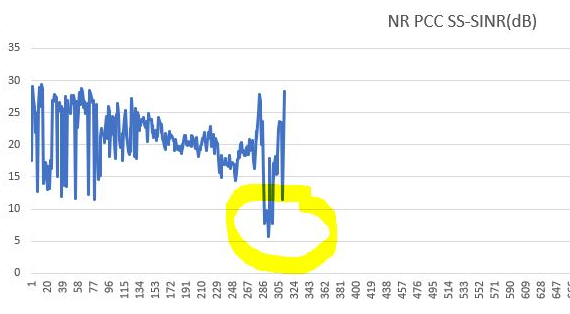For 2 ssb we need 2 epcri cables and 2 sfp.
There is mapping table for it.
So if there are 64 SSBs for example, what would be the scene?
For analog beamforming FR2 it’s beam sweeping only 1 ecpri required.
It’s not like 64 ssb tx at same time.
Ok and for FR1 with 8 SSBs?
In FR1 all 8 ssb tx at same time.
Here is gap, all 8 beam do not transmit at the same time.
See a beautiful video representation of SSB beam sweeping:
Here are the graphs. SINR scatter with rank:here are the graphs. SINR scatter with rank:
And sinr graph filtered when rank4:

2.5 Gbps with 4CA NR is what we have seen commercially.
Is the reporting rate of SINR comparable with that of Rank?
I filtered the log and kept only messages when RANK=4 and SINR=xxx.
That’s correct.
From drive test measurements one can easily plot the locations of each of these ssb indexes to see how they are spread across the sector with same PCI.
Is it hardcoded for Huawei?
I mean, number of ssb not parameter controlled?
Like 1 cell having 8 index, i.e. ssb 0 to ssb 7, but why for Huawei it’s always 8?
Indeed this is true. Consider that RI, PMI and CQI are utilized in different stages of the processing chain. CQI shall influence the MCS selection parameters, RI will influence the number of layers in the layer mapper and PMI feedback refines the Precoding process. So, it is possible to have higher Rank indicator by the UE even in overall low SINR as well. (Disclaimer: This is a very simplified description of the RI/CQI/PMI usage. They are actually interlinked as RI in the mathematical equation tries to maximize system capacity considering the PMI as well)
